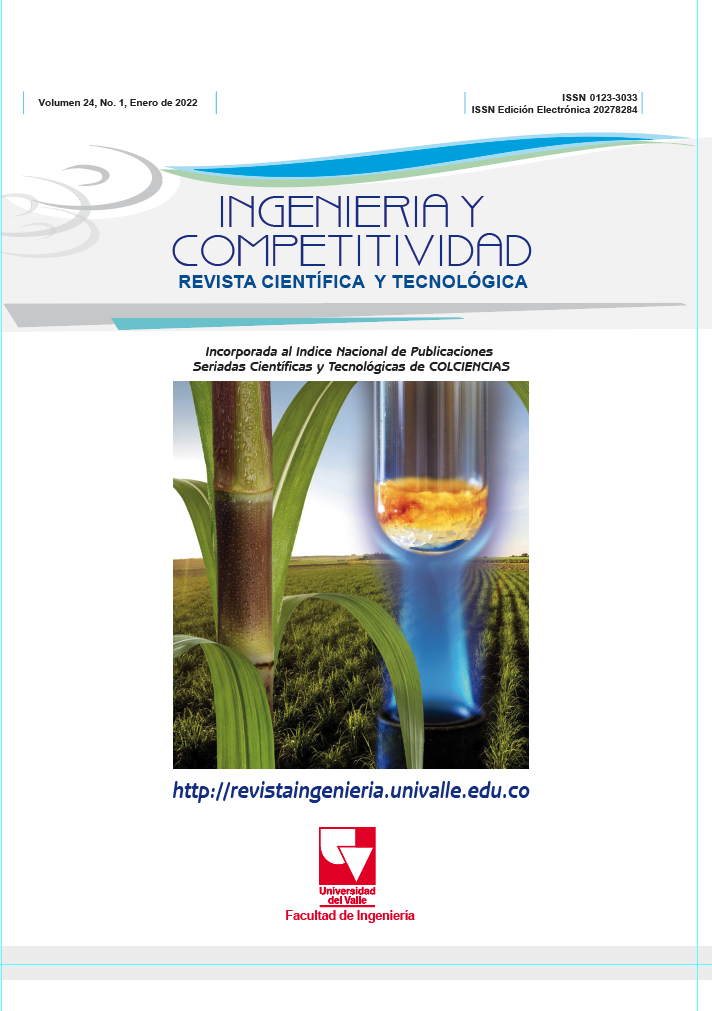Estudio evaluativo de una Arquitectura de comunicación anónima para la navegación web usando dispositivos SBC
Contenido principal del artículo
El mundo digital trajo muchos beneficios y riesgos para los usuarios, en consecuencia surge la necesidad de proteger la privacidad del usuario mientras navega por la web, en este artículo se describe el estudio evaluativo de los elementos que hacen parte de la arquitectura de un prototipo compuesto por un dispositivo SBC y software de anonimato que permite al usuario mantener anónima su identidad mientras navega por la web, inicialmente, se realizaron estudios para determinar qué áreas de la comunicación proteger, cuál es el software adecuado para la arquitectura y que dispositivo usar para el prototipo, adicionalmente se realizaron las correspondientes pruebas de rendimiento al prototipo, además de las pruebas de seguridad basados en el proyecto OWASP IoT; finalmente, el prototipo desarrollado permite el anonimato navegando desde el sistema operativo sobre el dispositivo SBC y además comparte ese anonimato por medio de una red Wi-Fi para que los usuarios o dispositivos externos puedan conectarse.
- anonimato
- navegación anónima
- privacidad
- placa sencilla de computador (SBC)
(1) Freedman M. How Businesses Are Collecting Data (And What They're Doing With It). Business News Daily. [Internet].; 2020 [cited: 2020 02 07]. Available from: https://n9.cl/ocwbd.
(2) Mendieta T, Herrera J, Jiménez A. La Capacidad del IOT de Transformar el Futuro. Revista AVENIR. 2019 09 18;1(1):15-18. Available from: https://fundacionavenir.net/revista/index.php/avenir/article/view/79.
(3) Vázquez DJ, Reigosa L. Una nueva aproximación a la enseñanza tecnológica superior de informática centrada en dispositivos de computación de bajo costo y alto rendimiento. In: Memorias del primer Congreso Internacional de Ciencias Pedagógicas. Guayaquil: Instituto Superior Tecnológico Bolivariano de Tecnología; 2015. p. 596–609.
(4) Greenwood D, Levin M. Introduction to Action Research. In: 2nd ed. Thousand Oaks C. Social Research for Social Change. Sage Publications Inc. 2007. https://dx.doi.org/10.4135/9781412984614
(5) Kock NF, McQueen RJ, John LS. Can action research be made more rigorous in a positivist sense? The contribution of an iterative approach. Journal of Systems and Information Technology. 1997;1(1):1-23. https://doi.org/10.1108/13287269780000732
(6) Moreno S, Rodriguez A, Sarmiento Y.Supercomputación basada en arquitectura ARM [Internet]. Bucaramanga: Universidad Industrial de Santander [cited 2021 feb 15]. Available from: http://wiki.sc3.uis.edu.co/images/1/12/G11.pdf.
(7) Zúñiga M, Amador D, Márceles K. Protección de datos anónima y portable. 1st ed. Popayán: Editorial Académica Española; 2020.
(8) Sanz F. Estudio de tecnologías para la protección de la privacidad mediante anonimato. [Bacherlor’s Degree]. Madrid: Universidad Autónoma de Madrid;2018. Available from: https://repositorio.uam.es/bitstream/handle/10486/688072/andreu_sanz_francisco_tfg.pdf?sequence=1.
(9) Pantoja ND, Jiménez AF, Donado SA, Márceles K. Cryptanalysis of the RSA Algorithm Under a System Distributed Using SBC Devices. In: Mata-Rivera M, Zagal-Flores R, editors. Telematics and Computing WITCOM 2018 Communications in Computer and Information Science, vol 944. Springer, Cham; 2018. p. 3–12. https://doi.org/10.1007/978-3-030-03763-5_1
(10) Zúñiga M, Amador D, Márceles K. Servicio de navegación anónima basada en un–Raspberry Pi. Revista íberica de Sistemas y Tenologías de la información. 2019 Dec;(26):587-597.
(11) The International Organization for Standardization-ISO/IEC JTC 1/SC 27 Information security, cybersecurity and privacy protection. ISO/IEC 27002:2013 Information technology — Security techniques — Code of practice for information security controls. 2nd ed. Switzerland: The International Organization for Standardization-ISO; 2013. Available from: https://www.iso.org/standard/54533.html
(12) The OWASP Foundation. OWASP Internet of Things. [Internet].; 2018. [cited 2020 02 14] Available from: https://www.owasp.org/index.php/OWASP_Internet_of_Things_Project.
Descargas

Esta obra está bajo una licencia internacional Creative Commons Atribución-NoComercial-CompartirIgual 4.0.
Los autores que publican en esta revista están de acuerdo con los siguientes términos:
Los autores ceden los derechos patrimoniales a la revista y a la Universidad del Valle sobre los manuscritos aceptados, pero podrán hacer los reusos que consideren pertinentes por motivos profesionales, educativos, académicos o científicos, de acuerdo con los términos de la licencia que otorga la revista a todos sus artículos.
Los artículos serán publicados bajo la licencia Creative Commons 4.0 BY-NC-SA (de atribución, no comercial, sin obras derivadas).





